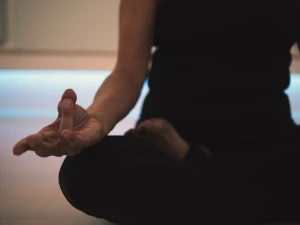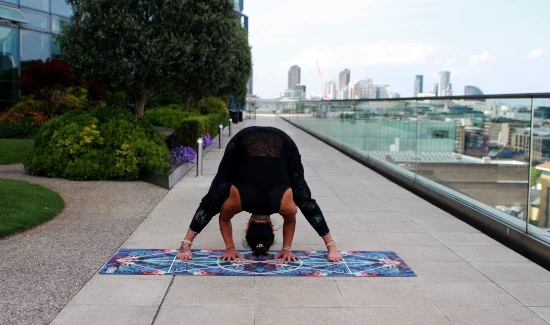What Yoga Teachers Need to Know About Eating Disorders
Wednesday, February 06, 2019, 02:55 PM
In February, advocacy groups work diligently to raise awareness of eating disorders for National Eating Disorder Awareness Week. The National Eating Disorder Association reports that 20 million women and 10 million men will have an eating disorder at some point in their life.
Current eating disorder statistics reveal that anyone can develop an eating disorder regardless of gender, age, race, ethnicity, culture, socio-economic status, or sexual orientation.
Types of eating disorders include anorexia, bulimia, binge eating disorder, orthorexia, compulsive exercise, food restriction and avoidance, rumination disorder, and laxative abuse.
Eating disorders can co-occur, meaning someone can struggle with aspects of different disorders at the same time (such as both bulimia and food restriction).

Further, recovery from one eating disorder can push someone into an active stage of another eating disorder. For example, someone who is recovering from anorexia may feel they need to restrict their food intake or over-exercise.
Yoga is often recommended for people who have dealt with an eating disorder as a tool to promote positive body image. It is a healing practice that can encourage a healthy relationship with your body while supporting awareness of how you treat yourself throughout the day.
However, yoga also tends to glorify thin practitioners who have achieved what many regard as "the perfect body." While most yoga teachers embrace all body types, you will likely have students in your classes who struggle with eating disorders and are unconsciously seeking a thin body.
As a teacher, awareness of how you speak about the physical body as well as how you portray it is important to offer a supportive and inclusive experience.
Teachers should be aware that people with eating disorders are often attracted to yoga because it is a community that encourages health in the form of clean-eating, exercise, control over impulses, simple living, and other restrictive activities. The discipline of an eating disorder can be mirrored in the discipline of a yogic lifestyle.
The yoga community does not intentionally put pressure on people to look or live a certain way. In fact most within it celebrate and accept all people. However, as a teacher it is helpful to note what parts of the lifestyle can trigger people with food insecurity and body image disorders.
Social Media Marketing of Yoga
Many yoga teachers and practitioners market themselves online. This can include photos and videos of the practitioner practising, tips for correct alignment, discussion of Eastern philosophies, and strategies for meditation.

To be conscious of students and followers who are struggling with an eating disorder, yoga teachers can consider the following when posting on social media:
- Represent a variety of body types, both male and female, on your page.
- Don't discuss or promote cleanses or restricted diets on your page .
- Promote health as embracing your body and understanding that all people have different genetic traits.
- Don't promote yoga as a weight loss tool .
- Address eating disorders candidly to create a safe place for those struggling with them.
As a society, we are already constantly pressured by the media to look, act, eat, and live a certain way. People with social media influence have a special opportunity to change the message about what is attractive and promote healthy body image.
Teaching Yoga to Students with Eating Disorders
Yoga classes offer students the chance to connect with themselves on spiritual and emotional levels. Yoga teachers facilitate healing, acceptance, and growth by guiding students through this therapeutic experience.
Teachers should be conscious that the positive experiences of yoga might be harder to obtain for some people than others. This is especially true for those who experience body dysmorphia.
One yoga therapist and anorexia survivor explains that the feeling of taking up space can be uncomfortable for people affected by eating disorders. When practising yoga, they may struggle with taking expansive poses, such as warrior pose, or with taking deep breaths that swell the body.
The following are some practices to incorporate into your teaching that will help create a supportive environment for those affected by eating disorders:
Physical Adjustment of Students
Do not touch people without their permission. Offer a non-verbal cue, such as having students tuck the corner of the mat under, so you are aware who has given permission for physical adjustments.
Studio Layout
If the studio has a mirrored wall, consider setting up the class so students are facing away from the mirror. This will encourage students to focus on how their body feels, instead of how it looks. It is also easier for students to avoid comparing themselves to others when there is no mirror to watch people in.
Mindset Instruction
Teach about compassion, acceptance, and presence in the body. Offer intentions at the beginning of every class that promote body positivity.
Respect Comfort-Zones
Never push students beyond their comfort level. Trust that your students are doing what is right for them in each pose.
People of all backgrounds, experiences, and body types should be embraced in yoga. As a teacher, you can facilitate growth and healing in various ways by offering safe, non-judgemental classes. Teaching from a place of awareness can help you avoid triggering students who struggle with eating disorder

